#also used sweet longganisa :3
Text
stew

#this is essentially just japanese white stew except i added cheese to the bechemel#also used sweet longganisa :3#awoo
2 notes
·
View notes
Text
Coffee in Philippine Culture

Coffee plays a vital role in Philippine culture. Regardless of your age, class, or location, it’s normal for early-rising Filipinos to start their day with a fortifying cup of coffee and toasted pandesal or a classic full rice breakfast of rice and eggs paired with tuyo (dried fish), tocino (sweet cured pork), or traditional Filipino sausages called longganisa.
Traditionally brewed coffee drinkers of our grandparents’ generation have a sentimental attachment to Liberica, locally known as Kapeng Barako. Younger generations and coffee lovers now enjoy Second Wave and Third Wave coffee shops, which have become an important “third space” for many people whose lives consist of work, home, work, and school.
A quick history of Philippine coffee
Coffee is not endemic to the Philippines. The first coffee beans – Liberica beans, to be exact – were brought to the Philippines in 1740 by two Spanish Franciscan friars and planted in the cool, elevated plantations of Lipa, Batangas. This marked the beginning of what historians call a golden era for Philippine coffee, which lasted almost 150 years.
Liberica beans from the Philippines soon became a valuable export to Europe and America. They could command up to five times the value of Arabica beans, also cultivated in the Philippines. And when other major coffee-producing territories like Sri Lanka, India, Java, and Sumatra were hit in the 1870s by a destructive fungal disease called Coffee Rust (Hemileia Vastatrix), the Philippines was, for a short time, the world’s leading coffee producer.
Unfortunately, Coffee Rust attacked and eventually destroyed Philippine Liberica plantations in 1889. Whatever crops could be saved from Batangas plantations were eventually replanted in the nearby province of Cavite. However, Liberica has yet to regain its prominence, and coffee production and export have declined in importance for many decades.
During the American period, the Americans encouraged Philippine agriculturists to plant Robusta beans (Coffea canephora). Unlike Arabica and Liberica, which grow at optimal levels at minimum altitudes 200-300 meters above sea level, Robusta is easy to cultivate in the lowlands and is more disease and insect resistant. Today Robusta is the country’s most dominant variety. Most of the Philippines’ Robusta crop is used in the production of instant coffee by Philippine and multinational coffee producers.
Instant coffee is still an essential component of Philippine coffee culture. Many brands of convenient instant coffee are sold in supermarkets, together with many types of 3-in-1 coffee sachet products that include powdered coffee, creamer, and sugar, all in one packet.
Second-Wave and Third-Wave Coffee
The interest in Philippine coffee experienced a resurgence in the early 1990s when enterprising coffee businesses banded together to relaunch Kapeng Barako and promote many small groups of Philippine coffee producers in the Calabarzon Region, the Cordilleras, and many parts of northern and southern Mindanao.
The arrival of Seattle’s coffee brands, notably Starbucks and Seattle’s Best, and other major coffee shop brands in the Philippines (the so-called “Second Wave”) also helped spark interest in the coffee origin and sustainability. In the last decade, many independent coffee shop owners have begun sourcing their beans directly from coffee cooperatives and do some – or a lot – of their in-house bean roasting.
Today, passionate Third Wave coffee drinkers are terroir-driven and are deeply interested in where the beans came from, what types of beans they are (Arabica, Robusta, Excelsa, or Kapeng Barako), and what flavor profile they might have (nutty, floral, fruity – or a combination of the three). More often than not, by supporting certain coffee shops, you directly support coffee cooperatives that these shop owners and small distributors champion – whether they’re from Sagada, Batangas, Sulu, or other emerging coffee-producing areas in the Philippines.
So whenever you visit your favorite coffee place or are looking for a new coffee type to sip, ask your seller more about their latest batch of coffee beans, their origin, their flavor profile, and how best to brew it.
We hope you enjoy the flavor discovery that comes with every cup you have!
Please visit our Coffee page to learn more about the specifics of our coffee beans Philippines.
0 notes
Text
Let’s Travel!
Have you ever wondered where your feet and money can take you? If no, then we got you covered. Let us take you to a journey.
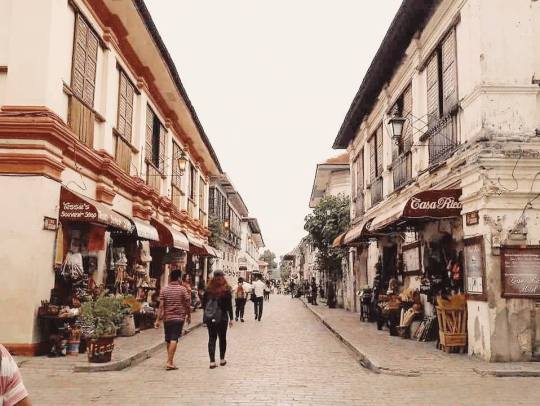
Vigan is a city in the Philippines, on the west coast of Luzon island. It's known for its preserved Spanish colonial and Asian architecture. Calle Crisologo dominates the Mestizo district, with its cobblestone streets, malecón, horse-drawn carriages and rustic mansions. Near the white baroque Vigan Cathedral are Plaza Salcedo, offering fountain light shows, and Plaza Burgos, known for its street-food stalls.
In 1999, Vigan was listed by UNESCO as the best preserved example of Spanish colonial towns in Asia. Its architecture is the conglomeration of cultural elements from the Philippines, China, and Spain, making it unique in the world. On December 7, 2014, Vigan was named as one of the New 7 Wonders Cities.

Before you go to a different place, you must have things to remember. If you don’t, then we have it listed for you!
5 ESSENTIAL THINGS TO BRING IN THIS ROAD TRIP
1. Travel Pillow. Expect a long butt-numbing road trip and you’ll be groggy with sleep (nothing else to do) so at least bring some comfortable pillows to support your neck, back or butt. I suggest inflatable pillows.
2. Chips. Expect to be bored and once attacked by boredom, the best way to kill it is to eat. Eat. Eat.
3. Patience. “Nobody said it was easy. No one ever said it would be so hard.” The lyrics from the song scientist can give you the idea for this road trip but please don’t get back to the start. Be patient and its gonna be worth it.
4. Good friends. “There ain’t no surer way to find out whether you like people or hate them than to travel with them.” You’ll definitely meet a few traveler on your way here, but be sure to bring your friends too. Just in case, you want to be sure if you love or hate their company.
5. Good Attitudes. Don’t be such a baby on how long the travel will be or how hot the trip is… no one is forcing you to travel to Ilocos, so better be ready. Have fun!

Of course, travelling is not free. Expenses are inevitable and it is better if you have everything planned beforehand. If you are organized with how you spend your money, then you can avoid wasting your own money. Here are charts for expenses that you may encounter.
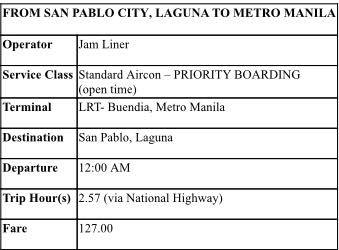


Here, we have listed the expenses that you are going to pay for and options for hotels that you can stay in. Along with it is the number of travelling hours.
Vigan is not only a historical place but also a place where you can have and create new memories. Make sure you visit these places.
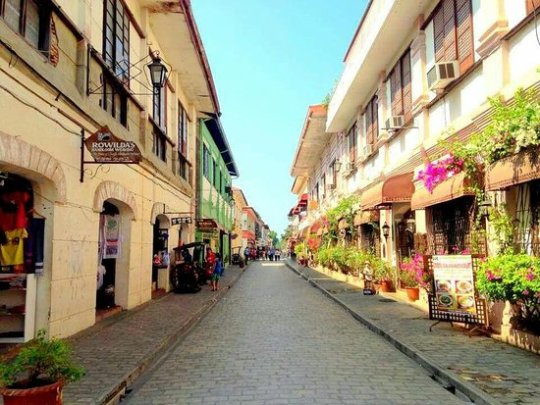
1. Calle Crisologo. This is a classic! Being able to cruise the street of a very historical place and admiring the architectural structures can really take your breath away.

2. Vitalis Villas. Vitalis Villas is actually a hotel and a place with fun activities, like zipline. It is also called as a mini Santorini as it mimics the structures of it.

3. Paoay Church. If you’re looking for relics of Saints and beautiful frameworks of a sacred place, Paoay Church is the perfect place for you to visit.

4. Sand Dunes. Experience warm and pillow-y sand on your toes here. You might confuse yourself because of how beautiful this place is. This is Vigan, Philippines, not Saudi Arabia!

5. Pagudpud. Pagudpud is a city in Ilocos Norte. Here, you will find the famous windmills; and the white sand beach, in Saud Beach, Pagudpud.

Memories! You need to store memories and catch moments that you can come back to with just one picture. But you can’t do this if you were not able to capture those. Take in mind these things.
5 ESSENTIAL STUFF TO BRING ALONG WHILE EXPLORING
1. Water. Drink up and keep hydrating yourself. The heat is too exhausting. Specially, before and after sandboarding, 4×4 ride, and Kapurpurawan Rock visit.
2. Camera. Never a camera-dull moment in Ilocos, so better gear up.
3. Jumping Travel Buddies. Picturesque tourist spot will definitely make you jump all over the place. Here are the best of the best jump shots of my friends.TALON ILOCANDIA 101.
4. Arm Cover/Umbrella. Hotta-hot! You might want to have some skin cover. Sun-kissed or sun-burnt skin just two options for this trip. LOL.
5. Sunblock. Protect your skin and apply sunblock often times.

Now while if you’re on the road and you got hungry, you can stop by at small eateries, we swear it is delicious! Here are some food that we can recommend for you to try in Vigan.
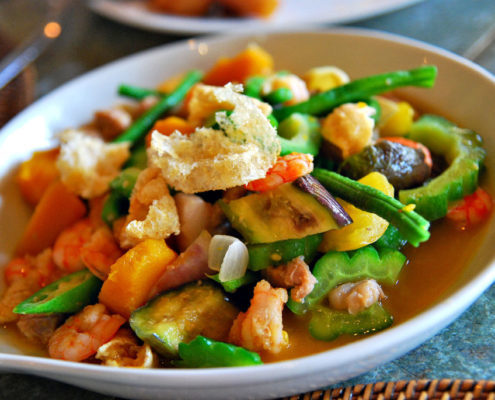
Pakbet
Vigan’s style of pakbet sets its difference from the Southern’s through adding bitter gourd and excluding squash which is a key ingredient of Southerns. It is also one of Ilocano's preserved dishes, if you’re feeling a bit conscious about your health, this is the perfect meal to try out in Vigan.
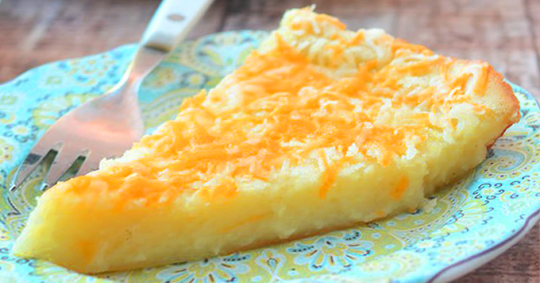
Royal Bibingka
Satisfy your cravings with this mouth-watering sweet treat. The crusty top and the sticky but soft cupcaked-sized body makes up the crowd favorite bibingka, not just an ordinary bibingka but a ROYAL bibingka! This small and definitely terrible bibingka topped with cheese and butter will never fail to satisfy your sweet tooth. Due to its pleasing characteristic, this treat made its way as one of Vigan’s specialties.
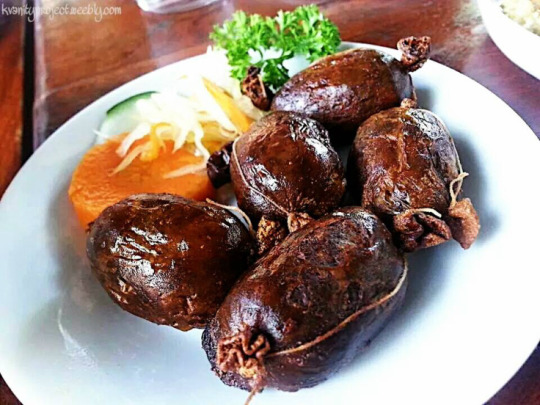
Longganisang Iloko
They say that breakfast is the most important meal of the day, but for the Vigan people, it's more important if you have longganisang iloko for breakfast. Also branded as Vigan longganisa, this very own version of sausage will change your life in a single bite! Filipinos cook them in a pan with a bit of water. After the water evaporates, the longganisa is fried using its own fat and is further fried until it turns slightly brown. It brings out its best flavor when dipped in vinegar.
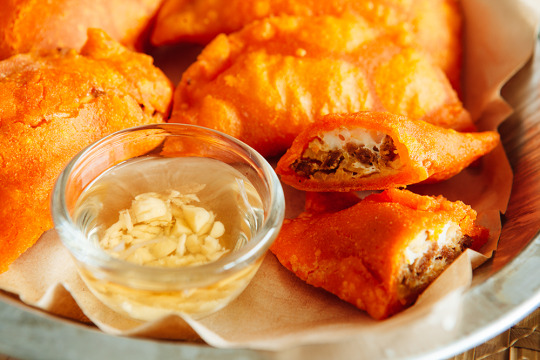
Empanada
"If you really visited Vigan then you've tasted the Vigan Empanada but if you didn't, then you're lying!" Just one of the expressions that you can hear from other people who've visited Vigan and tasted their world class empanada. Found almost anywhere within the crowded plazas of Vigan, Empanada is something Vigan takes pride in. Sellers make it right before your very eyes which is also another interesting sight.

Bagnet
Traditionally dried under the sun, marinated then deep-fried to make it crisp and tender, Bagnet is recognized as the region’s delicacy symbol. This huge chunk of meat with crunchy golden skin that was fried to perfection can be eaten at any time of the day and is available basically everywhere. One bite and you’ll get hooked so be wary of this cholesterol-rich slice of heaven.
---
Sadly, we have come to the end of our journey. Time to pack our belongings and head back home. It was such a fun experience. We hope that this has helped you! Convinced to travel to Vigan, yet?
2 notes
·
View notes
Text
Newest Delicious Discovery: Chorizo Pudpud
During these times when I’m in the process of putting-this-life-back-together-despite-unemployment, I noticed that selling food online is continuously growing. Seeing photos of home-cooked meals through my newsfeed is not just making me hungry, but it also gives me ideas on how to start a home-based food business.
It requires a lot of research and planning for sure but I’m still deciding on what kind of food to sell and how. I’m thinking of something that’s easy to get the ingredients, easy to handle, and doesn’t spoil easily. Chorizo is one of the best candidates to consider.
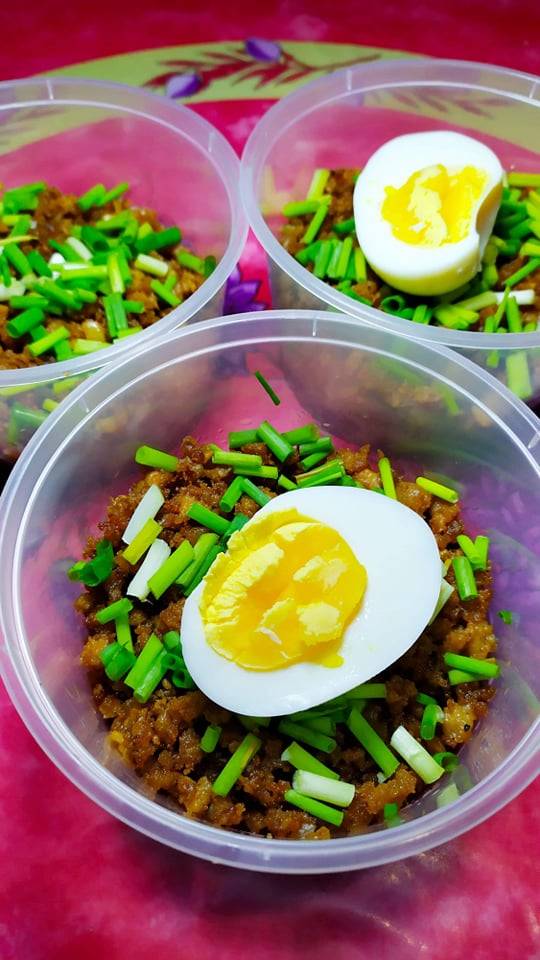
Until Klim’s Chorizo started as a business and currently publishing food posts related to chorizo. I told myself that this food looks delicious and versatile even though I don’t really adore the usual Pinoy pork longganisa.
Then I searched for the recipe and stumbled upon revitenkitchen.com’s Chorizo Pudpud, a Bacolod-inspired skinless longganisa. The blog says the goal of cooking this recipe is to make the pork's flavor garlicky and not too sweet. Three other things I learned from this recipe:
1. Colorless, casing-free with all-natural ingredients, unlike the usual Pinoy longganisa.
2. Pretty good though it’s not the traditional recipe.
3. The easiest longganisa you can make at home.
Just like what my momma said, “if you can’t afford it, cook it at home and you’ll stop the cravings.” I’m impressed at how this recipe has turned out for the first time. I put in less sugar, 3 tbsp instead of 5 tbsp or more from revitenkitchen.com’s recipe, as I don’t want it too sweet. Then you just need to put in exact measurements of other spices and it's easy to enjoy your Bacolod chorizo at home.
Ingredients
1 kg /1000 grams ground pork (preferably not lean but with fat)
1 whole minced garlic
1 tablespoon soy sauce
4 tablespoons white vinegar
1 tablespoon sweet or smoked paprika
3 tablespoons brown sugar
2 1/2 teaspoons salt
3 teaspoons ground black pepper
Cooking oil (for frying)
Instructions
1. In a large mixing bowl, combine all the marinade ingredients. Stir until completely dissolved. Add ground pork and mix well until combined.
2. Transfer the mixture in a large resealable bag or sealed container and let it marinate in the fridge for 6 to 24 hours or freeze until needed.
3. Add oil in a pan over medium heat. The oil should just be warm enough to sizzle the meat but not too hot. Stir occasionally and fry until lightly brown to lightly toasted.
4. Served hot with fried rice, eggs, and vinegar dipping sauce.
Google says there are plenty of dishes you can make from chorizo. I already made chorizo fried rice and some easy chorizo vegetable dishes and there are more ways to use your chorizo. It can be a breakfast bowl, omelet, chowder, burger, nachos, pizza, maki, sandwiches, tortillas, meatballs, soups, croquettes, pasta, and more.

You just need to be creative to reproduce chorizo into a variety of dishes. You will surely love this recipe -- it’s easy and extremely versatile.
0 notes
Text
TRAVEL DIARY | BAGUIO 219
We are down to the last 2 months of 2019 and I am so glad I was able to squeeze in a little trip up North with the B! We are excited to finally escape our daily work routine. It was a great time to visit my brother Choi too, who is currently studying in Baguio.

I booked our hotel via ZENROOMS. (which is now my favorite hotel app! I love how they offer clean, comfortable yet very affordable rooms!) We chose Casa Bel Baguio that only cost us 1810.00php for 2 nights. (I used a 20% promo code too!) You can’t expect much from it as it is very basic though I was surprised that ours included a balcony and a decent parking space. This is probably one of the reasons why we didn’t opt for the prettier options on AirBnB. Madaming mas maganda but it’s either mahirap puntahan or there are no guaranteed parking space. Casa Bel located along Marcos Highway which is 15-20 minutes away from the city proper.

We didn’t visit the other common tourist spots because we’ve been here a few times already. We only went to Camp John Hay just for some photo ops. They do offer a lot of cool adventures but were too lazy (or scared lol) to try any. You can check the list here: https://campjohnhay.com/explore.html

Inside Camp John Hay is a garden called Bell House. We paid an entrance fee of 48php/head.

WHERE TO EAT IN BAGUIO:
ARCA’S YARD
Location: Tiptop, Ambuclao Road, Baguio City
We had our first breakfast in Baguio at this very dreamy cafe called Arca’s Yard. It is located approx. 15-20 minutes from the city proper. It is an old 3-story house converted into a very cozy and homey restaurant. We sat on a table beside a white wooden window where I enjoyed sipping my hot chocolate drink while I appreciate the beautiful view of tall Pine trees swaying outside.
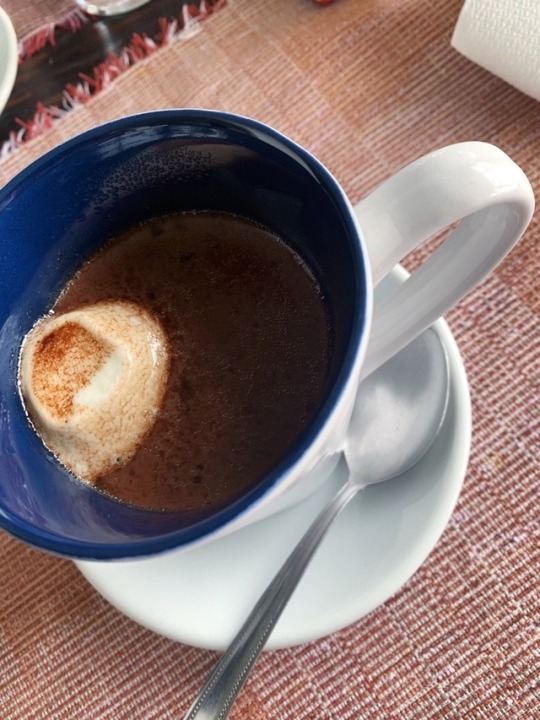
WE ORDERED THE FOLLOWING:
LONGGANISA - (165)
HUNGARIAN SAUSAGE WITH BACON AND GG - (210)
CACAO HOT CHOCOLATE - (75) ugh! this one set the bar up high. I love how authentic it tastes.. it’s perfect for the cold breeze outside.
CREAM OF MUSHROOM - I forgot to take note of the price. The B ordered this one and he really liked it. He said the smooth texture of the soup is very creamy and tasty. It’s like the ingredients melt and dance in his mouth which he really liked.

HODORI KOREAN AND JAPANESE RESTAURANT
Location: Mabini Street | Session Road
I craved for Samgyupsal on our first night in Baguio. This one is located near Session Road so we gave it a try.
390PHP/per person for unlimited meat and serving dishes
You’ll get 4 types of meat: Samgyupsal (Pork Belly) Woosamgyup (Beef Belly) Pork Bulgogi and Beef Bulgogi
They also offer additional serving dishes: (which are also part of the unlimited)
- Shrimp Tempura (which to my surprise doesn’t really taste like one. PLEASE SKIP THIS)
- Fried Chicken
- Seasoned Chicken
- Kimbab
- California Maki _(This together with the Japchae were okay)
- Japchae
*Note that they do offer Korean ice cream but it is no longer part of the unlimited :)

GLENN’S 50′S DINER
Location: 92 Upper General Luna Road**, Corner Brent Road
I honestly have high expectations with this diner as a lot of bloggers have been raving about this. (There is another branch which is only called “50′s Diner” located inside Porta Vaga mall) The B and I arrived there just in time for lunch so we had to wait for about 10 minutes before we got our table. I was expecting it to look close like the Filling Station in Makati but the retro vibes was not really there. Maybe because it was too small and the place was packed with customers when we went there.
WE ORDERED THE FOLLOWING:
GRILLED PORK BELLY - 135PHP (Soft and tender meat. It was good!)
BLT - 1150PHP (The bun was really big! I enjoyed my burger though nothing was really special about it)
CREAM OF MUSHROOM - 60 (This one doesn’t taste home-made. I feel like they used those easy-cook sachets to make this)
STRAWBERRY MILKSHAKE - 70 (I am a sucker for Strawberry milkshakes and this one was what I really loved. The combination of milk and strawberry was perfectly blended. It was not too sweet and I find it very affordable for the big glass.

BAGUIO CRAFT BREWERY
Location: Marcos Highway
This is another must-try place in Baguio as it gives a whole new social drinking experience. Too bad we went there during a black out in the area so we were only able to check out the roof top without experiencing the view of the city lights below the building. It was a great experience as it was my first time to try craft beer. How it works is you have to go to the cashier where all the craft beers are located. You may ask for free taste until you find what beer really suits your liking.
We ordered the following:
Lagud - Strawberry Fruit Beer - (180PHP) I played safe and ordered this one. hehe This was actually my brother’s first choice. It was good. It tastes like wine to me!
Kraken - mixed with coffee - (190PHP)
English Man in New York - mixed with caramel - (190PHP)
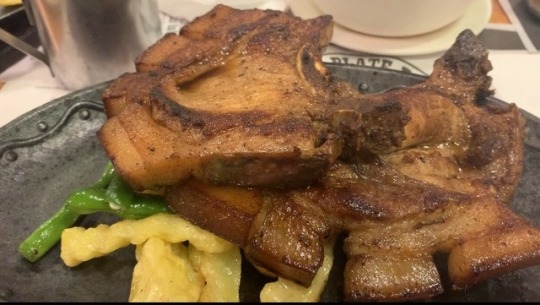
SIZZLING PLATE
Location: 116 Session Road
The B has been eyeing this the moment we passed Session Road. We could see a lot of people dining in so we finally gave it a try on our 2nd night in Baguio. We were surprised that this restaurant is the same one we see inside SM’s food court. However they do offer bigger serving that still didn’t hurt our pockets.

WE ORDERED THE FOLLOWING:
GRILLED PORKCHOP
T-BONE STEAK - 240PHP
SALISBURY STEAK - 161PHP
CREAM OF MUSHROOM

ILI LIKHA ARTISTS VILLAGE
Location: Assumption Rd
You should definitely consider going to this place when you go to Baguio. It’s not your typical food hub as the entire place was built with big trunk of trees. All the pieces made to assemble the food hub are recycled which is really evident if you would walk around the place.While appreciating the crazy aesthetics of the entire place, you could fill in your stomachs from the different food stalls inside. You can order from any of the stalls and they would bring you your food wherever you want to be seated.
We ordered the following: (We ordered these from 3 different merchants but I wasn’t able to take note of each names)

BALBACUA - 75 (I’ve been curious about this too as I’ve read this dish in a lot of other blog post. They said it taste like “pares” which I don’t really eat but I gave it a try anyway... locals, please don’t get mad at me but I feel like matabang siya. :(
RICE - 35 (I ordered one rice because the dish doesn’t include it yet)
BULLET PROOF COFFEE - 110 (Coffee is always a good idea anyway. I loved this!)
PINIKPIKAN - 110 (Here’s another dish we got curious with. It turned out it taste exactly like Tinola hehe masarap!)
ALIGUE RICE WITH BAGNET + 1 STEAMED RICE - 170 (I enjoyed the Aligue rice as it was very tasty and flavorful pero naumay kami with the rich taste so mixed it with steamed rice hehe)
SAGADA COFFEE with 1 free refill - 50

This is a little bridge going to the other side of the food hub.

you can dine wherever you want!
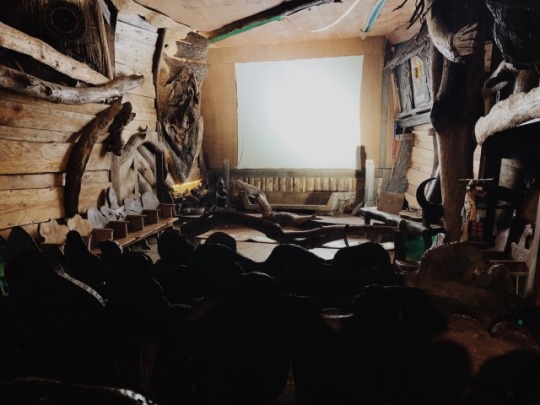
This one is pretty awesome! They have a small theater designed with wood and trunks. I believe this is where they would invite people and play indie films.


OTHER INFO I WOULD LIKE TO SHARE :)
- Total gas was 2000.00 for an AT Sedan Hyundai Accent (departed from Tandang Sora, Quezon City. 3 days stay. Including city driving)
- Total toll gate was around 1300.00
- Total budget for pasalubong was 600-1200.00 (Dun kayo sa Public Market nila bumili kasi mas mura yung mga pasalubong dun. Mas makakatawad din. Sample pricing: 120php for the big Choco Flakes, 80php for 1 pack of cheese bars, 100php for 7 Fuji Apples, 80php for the Lengua)
- If it’s your first time going to the night market. Only bring a small bag or purse. Expect na sobrang daming tao talaga. They open at 9PM :)
- Looking for the best cake? YOU MUST TRY VIZCO’S STRAWBERRY SHORTCAKE! Located along session road :)
**
I enjoyed writing this travel post! I hope to write another one anytime soon.
**
Thank you for visiting my blog! :)
Let’s stay connected!
Facebook: facebook.com/toldyoushecan
Instagram: instagram.com/toldyoushecan
Youtube: youtube.com/toldyoushecan
For business purposes please email me at [email protected]
Love,
Claudine
#toldyoushecangoplaces#toldyoushecan#claudinedeleon#thebstories#baguio#travelph#explorepilipinas#campjohnhay#arcasyard#50sdiner
0 notes
Text
Bench Cafe Opens New Branch in Greenbelt 3
After the opening last year of the very first Bench Cafe located inside its flagship store in Bonifacio Global City, the restaurant has now opened its second branch at the Greenbelt 3 in Makati city. Bench Cafe has been well-received by foodies and Bench aficionados for its stylish yet affordable Filipino cuisine, so it is just right that they are now expanding into other parts of Metro Manila.
You can find the new branch of Bench Cafe at the second floor of Greenbelt 3 inside the Ayala Center in Makati. The restaurant opened to the public on December 17, 2018 but The Hungry Kat got a sneak preview a few days before during a private event to see the new location and to sample some of the new dishes that will also be launched on the menu.
The popular Philippine retail store Bench partnered with FooDee Global Concepts, which manages and operates some of the best restaurants in the city including Tim Ho Wan, Mesa, Pound by Todd English, Kam’s Roast, and more, to create Bench Cafe which has been an outstanding success on its first year. The new branch carries the same stylish and casual ambiance that the brand is known for.
Bench Cafe Executive Chef Carlo Miguel has created a menu which uses local Filipino flavors and ingredients but gives it a new modern look. He calls it a fusion of Filipino with Filipino, using traditions from all over the islands to create a distinct but truly Filipino taste. The prices are all affordable, ranging from around P200 to P300 which caters well to their target market.
Some of the new items that we sampled that evening included the Sisig Pancit, a combination of two Filipino favorites which is good for a light merienda and even for lunch or dinner.
Another unique Filipino combination is the colorful Longganisa Pancit which also brings two familiar Filipino items together in one dish. It’s a simple creation but the sweet and salty flavors of the longganisa really balances well with the pancit.
Another Filipino favorite is the Pork BBQ Skewers which are 24-sous vide bbq pork belly served with atsara and Bench salsa. These are items you might find sold on the streets, but I would definitely prefer eating these delicious barbecues inside Bench Cafe.
Adding to the selection of rice dishes at Bench Cafe is the Pinakbet Rice. This is another good option to go along with their Bagoong Rice, Talangka Rice, or Dilis Rice.
The Sinigang sa Santol is a warm and hearty bowl of my favorite sinigang which is what I simply call Filipino comfort food. This is a great dish that truly reminds me of home and is always a welcome treat anywhere I dine.
Bench Cafe specializes in its Bench/To (Bento) set meals, which is an upgraded turo-turo set. We have probably all eaten at food courts or cafeterias that offer viands with rice and a side dish. Bench makes it more stylish as they now offer eleven different Bench/To sets that all come with at least two viands, vegetables, and rice presented in a cute tray. This is the Bench/To Set 1 with Liempo Inasal and Gising-Gising together with langka, atsata, Bench salsa, condiments, and steamed Ifugao rice.
Another option is the Bangus ala Pobre Bench/To Set with a very tasty bangus belly topped with loads of garlic.
If you are really hungry, go for the Bench/To Set 9 comes with Kaldereta plus Liempo Inasal and pinakbet. That should really satisfy even those with the biggest appetites.
The Chicken and Pork Adobo is also an option if you want to savor this classic Filipino dish. All the dishes at Bench Cafe are very familiar to Filipinos but with a modern and stylish interpretation.
For desserts, the Flan B is always a good choice with its sweet and delicious leche flan topped with macapuno.
One new dessert that was presented is the Turon with Ube Ice Cream which combines the popular street food with a refreshing scoop of ice cream.
If you really like ube, then you will also enjoy the Ube Leche Flan Cake. Another choice is the Caramel Bukayo Cake. These sweet slices are a lovely way to complete your Bench Cafe dining experience.
There is also the Bibingka Cheesecake which is a Filipino-style cheesecake topped with a salty egg yolk, or go for the Dark Tablea Cake for that rich and dark chocolate taste.
Congratulations to Bench Cafe for the successful opening of your second branch. They have plans to expand to more locations in 2019, including in Pasay City and possibly in SM North EDSA, so that is something I am looking forward to. Thank you to Chef Carlo Miguel for hosting our private dinner party and letting us sample your new dishes in advance.
Bench Cafe
2/F Greenbelt 3, Esperanza St. corner Makati Ave, Ayala Center, Makati
www.facebook.com/BenchCafePH
0 notes
Text
10 Must-Try Ilokano Food
Out of Town Blog
10 Must-Try Ilokano Food
Food Trip: Must-Try Ilokano Food
Majority of the Ilocos Region is fueled by agriculture and the fishing industry, which go well with the geographical characteristic of the region—flat plains beside the sea. Much of this has contributed to the local way of life and culinary scene in the past. The Ilokanos, who were mostly busy farmers and fishermen, cooked simple dishes with fresh ingredients from the farm, and used minimal seasoning. They often used anything they could find in the kitchen and threw them together in a pot to boil.
Pinakbet
Today, the Ilokano have preserved this way of cooking—fresh, simple, and abundant in flavor, and healthy. This is why the dishes from the region have this certain charm in them, and these ten take the spotlight:
1. Pinakbet
Pinakbet with Bagnet – Ilokano Food
Alternatively called Pakbet by the locals, this vegetable dish is perhaps the embodiment of Ilokano cuisine. The average bowl of Pinakbet is created with almost any vegetable—if you know the lyrics to the folk song “Bahay Kubo”, you will have an idea of what these veggies are. Majority of those mentioned in the song are ingredients to Pinakbet. Afterwards, they are boiled until cooked, and then seasoned with the region’s signature bagoong or fish sauce, and lastly, pink shrimp paste. Others may add pork belly with this vegetable dish.
2. Dinengdeng
Dinengdeng – Photo credit: IlocosNorte via Foter.com / CC BY-NC-ND
This dish is often interchanged with Pinakbet because of their similar method of cooking and appearance. Both are vegetable soup dishes, and both use a variety of vegetables. The difference between the two, however, is that while Pinakbet contains the more colorful “Bahay Kubo” veggies, Dinengdeng only tends to use green or yellow ones—malunggay leaves and fruits (the long pods), squash and squash blossoms, and alakon blossoms, to name a few. Tossing in grilled pieces of fish or other meat is also frequently done here.
Want to know another major difference? Dinengdeng uses only bagoong, but does not use shrimp paste.
3. Tupig
Tupig –
Photo credit: IlocosNorte via Foter.com / CC BY-NC-ND
Made from glutinous rice and coconut milk, Tupig can serve both as a snack and a dessert. Rice soaked with water is mixed with coconut milk, and then a small amount of mixture is wrapped in a strip of banana leaf like shanghai rolls. Afterwards, these are cooked in a grill. The result: a slightly charred and smoky taste of a sweet, coconut-ty and sticky dessert. The small amount of serving will actually leave you craving for more. Sadly, this exotic taste cannot be replicated by what is served in restaurants.
4. Dinakdakan
Dinakdakan – Photo credit: IlocosNorte via Foter.com / CC BY-NC-ND
Ilokanos are people who do not like the sight of leftovers. This is why they turn any present raw ingredient into something impressive. This also applies to Dinakdakan, a sisig-like dish that is made from not just grilled pieces of pork, but grilled pieces of the often times discarded parts: pig face, ears, liver, tongue, and yes, brain. Afterwards, these smoky pieces are tossed into a mixture of calamansi, red onions, and sometimes ginger and red chili peppers. Mashed brain is used to add texture and cream to the dish. Modern takes on this dish use mayonnaise as an alternative to brain.
5. Pinapaitan
Pinapaitan – Photo credit: wallyg via Foter.com / CC BY-NC-ND
“Pait” is a Filipino word which means “bitter”, and “pinapaitan” roughly translates to “make bitter”. This name actually sums up the taste of this dish. Made with very thin strips tender beef, ox tripe, small intestines, heart, bile, and large green chilies, Dinakdakan will take you on a roller coaster of flavors. The bitterness can be toned down by squeezing some calamansi to the dish, and by, surprisingly, eating it while it’s very hot. Even those who are not bitter by heart can thoroughly enjoy this dish.
6. Sinanglaw
Most Ilokano dishes use a lot of the discarded parts of meat like innards. The hardworking and thrifty mentality of the Ilokanos are just some of the reasons why they enjoy transforming any leftover into a delicacy. Sinanglaw is another example of this. Sinanglaw is like Pinapaitan, only this time, it does not have a bitter taste. Although bile and ox tripe are used in this dish, the former is diluted and a larger helping of beef tendons and beef brisket are used. After cooking the meat in low heat for several hours, the resulting, flavorful soup is seasoned with ginger, sour tamarind, and finger chilies.
7. Empanada
Super Super Special Empanada
Most parts of the Ilocos Region have been heavily influenced by Spanish colonizers. One proof of this is the presence of Empanada in the local cuisine. Although it is Spanish in origin, the Ilokanos gave this fried dough snack a twist that is exclusively their own. Unlike its European variants, Ilokano Empanada uses sweetened dough, is flaky, and contains ground pork, diced potato, carrot, and peas as filling.
8. Vigan Longganisa
Vigan Longganisa Breakfast
Vigan Longganisa is Ilocos Region’s uniquely salty, and spicy sausage delicacy. While other regions produce sweet sausages, the locals use a variety of marinades, such as Sukang Iloko, that give Vigan Longganisa that distinct tang. Garlic is also abundantly used in creating this, and the resulting flavor makes Vigan Longganisa unique. Some parts of the region use thoroughly cleaned pork intestine as an alternative sausage case.
9. Igado
Igado –
Photo credit: IlocosNorte via Foter.com / CC BY-NC-ND
Made from pork tenderloin and innards, Igado is a popular Ilokano dish that makes you want to eat more rice. This dish does have its bitter notes, but the sweet-and-sour taste of the pork tenderloin, which is soaked in Sukang Iloko, soy sauce, and pepper, evens this out. Although the dish has no broth, it has a rich and thick texture, which is further enhanced by the crisp of red bell peppers and green peas.
10. Insarabasab
Insarabasab – photo courtesy of wnduldulao
Another must-try grilled Ilokano delicacy is Insarabasab, the region’s version of Sisig. Like some of the dishes in this list, what makes Insarabasab different is its use of Sukang Iloko. Pork belly or shoulder pieces are marinated overnight with Sukang Iloko, calamansi, and garlic. Afterwards, they are cooked in an “Insarabasab” way—“something burned in fire”. This is also another distinguishing factor of this dish. The meat pieces are allowed to sear a little to give a smoky flavor. The grilled pork is then mixed with raw red onions and red chilies.
Also Read:
Villasis town in Pangasinan holds ‘Pinakbet’ cookfest
10 Items for your Bucket List: Adventure Spots in the Philippines
Pagudpud Budget Travel Guide: Things to do, Where to Stay and How to get there
10 Must-Try Ilokano Food
Melo Villareal
0 notes
Text
Charming Weekend Brunch at Rustic Mornings by Isabelo
I have heard and read about Rustic Mornings by Isabelo in Marikina for quite a while already, but I had yet to visit this charming restaurant since I don’t usually spend a lot of time in that area. I was able to sample some of their all-day breakfast specialties last summer when Chef Portia Baluyut had a guest stint at Holiday Inn Makati (Read: Rustic Mornings at Flavors Restaurant in Holiday Inn Makati), but I still wanted to try the full dining experience at their main location. I finally got the chance to do so with my friends a few weeks ago when we finally visited what is arguably the most beautiful restaurant in all of Marikina.
Rustic Mornings by Isabelo Garden is a cozy garden restaurant serving all-day breakfast, lunch, pastries and coffee enjoyed by families because of its unique charm and rustic homey ambiance. Owned by Portia Dee Baluyut, it has been regarded as one of the best restaurants in Marikina since it opened in 2012. I’m not that familiar with the Marikina area, but it was easy to find Rustic Mornings which is located at 11 Isabelo Mendoza Street, San Roque, just a few steps away from the Our Lady of the Abandoned Parish Church along J.P. Rizal Street.
I visited Rustic Mornings for brunch one Saturday morning with my KTG blogger friends, including Bettina Bacani of Life in Technicolor. The restaurant is open daily from 8:00am to 4:00pm on weekdays and up to 9:00pm on weekends. Isabelo means ”God Is Bountiful” and you can see how the owner dedicates much of the success of her endeavours to the Lord and how she has been reciprocated with these blessings.
I instantly fell in love with the relaxing and laid-back ambiance of the place. It actually feels like I’m in Tagaytay and not in Marikina, especially with the cool breeze and the lovely garden setting. Bag of Beans in Tagaytay comes to mind but Rustic Mornings feels more personal, as if you are dining at home with your extended family and you are all attending a big, happy family reunion.
Rustic Mornings by Isabelo was started by advertising executive turned chef and restaurateur Portia Baluyut in 2009 as Isabelo Garden, a by-reservation only restaurant that initially had just one table. This location is actually part of their ancestral home which she converted into her venture. She used to do everything herself, including setting up the table, opening the gates, and serving the food. With no formal culinary training but a lifelong love for food and the creative process, Portia evolved her restaurant into Rustic Mornings in 2012. Serving hearty and delicious all-day breakfast in the heart of Marikina, Rustic Morning has been named as the top breakfast place in the metro for the last four years by Spot.ph.
What makes Rustic Mornings feel even more like a real home is their resident furry manager, the cute, friendly and lovable chow chow, Yogi! I just adore dogs, especially chow chows, and many of their returning guests actually come here just to see Yogi. He actually has his own Instagram account at @yogiwogichow where you can see more of his fluffy antics.
Because of its success, the restaurant has been expanding through the years with more sections being added each time. You can choose where to spend your relaxing afternoon with its 120 seating capacity spread throughout its gardens. The interiors and artwork were designed by Portia’s mother, Stephanie Baluyut, who is an artist and collector of these colorful trinkets and items which she proudly displays all over Rustic Mornings. Much of the restaurant’s overall charm and vibe is from Stephanie’s own personality. This area is where most of her various paintings are displayed.
This is a great place to enjoy a cup of tea with the señoritas of Manila or to catch up on the latest gossip with your friends. Now I don’t have to travel all the way to Tagaytay for a breezy and cozy afternoon.
They also have an indoor dining area if you want some place cooler with air-conditioning. This section is part of the original house where the Baluyut family lived so it does feel like a true family home.
Aside from coffee and tea, Rustic Mornings offers a refreshing selection of Milkshakes like the Vanilla Speculoos (P230) and Choco Nutella (P230). They also have Healthy Fruit Shakes and a Frothy Kalamansi Iced Tea.
The Spinach Artichoke Dip (P350) is the dish which made Isabelo Garden famous and it has been carried over to Rustic Mornings. I like its creamy and cheesy texture with a flavor that is not too overpowering. It certainly goes well with the toasted ciabatta bread and probably with anything else.
Their Toast Bar is also a good way to start breakfast as it features several different toppings to go along with your toasted bread. The Lox (P550) comes with toasted bagel topped with cream cheese, salmon, capers, and lemon zest. These are also served with a spinach, arugula, and cherry tomato salad.
You can also go for something healthier like their Smoothie Bowls. The Acai Bowl (P350) is a colorful bowl containing a variety of fruits and acai berries which are good antioxidants for the body.
Rustic Mornings serves all-day breakfast and brunch items so you can have these any time of the day. They are best known for their delicious waffles and pancakes doused with their homemade pancake syrup. Try their Crispy Plain Waffles (P200) or the Waffle Churros (P230) with its sweet cinnamon powder. Better yet, order the Half Plain, Half Churros (P215) plate if you can’t decide which one to get.
The Original Buttermilk Pancakes (P220) is always a delightful treat topped with special butter cream and its very own classic syrup, but you can also try the other variants like the Blueberry Buttermilk Pancakes (P240) or the Chocolate Chip Pancakes (P230).
Another sweet option is the French Toast Tower with Grilled Peaches (P320). Guests can also customize their own waffles, pancakes, and French toasts with additional toppings like mangoes, strawberries, banana, kiwi and roasted almonds.
If you prefer something savoury for brunch, try any of their 3-Egg Cheese Omelets which are all served with 2 slices of French baguette, herbed butter and jam. I ordered the Three Mushroom (P270) cheese omelet with an additional Salad (+P130).
Rustic Mornings also has pasta dishes which are good for up to two persons. I tried the special Dee Heirloom Spaghetti (P330) which is a recipe from Portia’s grandmother. I really love this Pinoy-style spaghetti with its rich tomato sauce and cheesy flavors.
I am used to having rice for breakfast so their Filipino Favorites are great options both for breakfast or lunch. The Beef Tapa (P290) comes with tender strips of marinated beef with your choice of egg and fried rice.
You can also go for the Ilocos Bagnet (P340) with its crunchy cuts of deep-fried pork belly, enough to power up your day. Guests can also customize their plates with additional items like bacon strips, eggs, longganisa, corned beef, and more. If you want a bit of everything, order their Breakfast Platters where you can combine French Toast, Eggs, Bacon, and Sausage (P350) all in one gigantic plate.
Other Rice Bowls on the menu include the Grilled Salmon Fillet (P400) and the tender Beef Ribs (P320) which are both great options for lunch. The menu at Rustic Mornings is huge and there are so many other comfort food items I wanted to try including their pizza, burrito, and other breakfast platters, but I’ll just have to come back next time.
There are several cakes and dessert options as well, but Portia wanted us to try one of her specialties, the Real Blueberry and Lemon Cheesecake (P2600). This is made with generous amounts of blueberry and you can really taste the quality of the ingredients used.
Portia uses only fresh, imported blueberries which are swimming in a sea of decadent cream cheese. The ripe lemons also add a delightfully ticklish tang and it all goes together in this labor of love.
Rustic Mornings by Isabelo is celebrating its 6th Anniversary this month and as an annual tradition, they will soon be offering again their Anniversary Brunch Buffet on November 16, 2018. Guests can enjoy a wide range of appetizers, salads, all day breakfast, Filipino favorites, entrees, pasta, sorbet and ice cream for only P600 per person. Reservations will be highly sought after as diners can only choose from three time slots [8:00-11:00am, 11:00am-2:00pm, 2:00pm-5:00pm] so make sure to book your seats early.
If you want to bring the taste of Rustic Mornings back home or for a special celebration, they also offer Party Trays which are available for pick up or via your favorite delivery apps (delivery charges apply). These are good for up to 10 persons and are perfect to bring to parties or pot luck occasions. The Breakfast Baskets containing Rustic Mornings’ homemade pancake mix, pancake syrup, ground coffee, and strawberry jam are also great options for holiday gifts.
It was so nice to finally visit Rustic Mornings by Isabelo and we all really had a great time. It’s not just the usual restaurant dining experience because it feels more like eating out with the family at your lola’s house. The food was exceptional and the garden setting really gives the place an enchanting and cheerful ambiance. I will definitely go back here with my other friends so I can also introduce them to the cuddly and adorable Yogi. I’ll see you again soon!
Rustic Mornings by Isabelo
11 Isabelo Mendoza St., San Roque, Marikina City
425-8610 / 681-2461 / (0917) 700-5810
www.facebook.com/RusticMornings
#RusticMornings#AllDayBreakfast#Brunch#Garden#Restaurant#Marikina#PortiaBaluyut#RusticMorningsbyIsabelo
0 notes